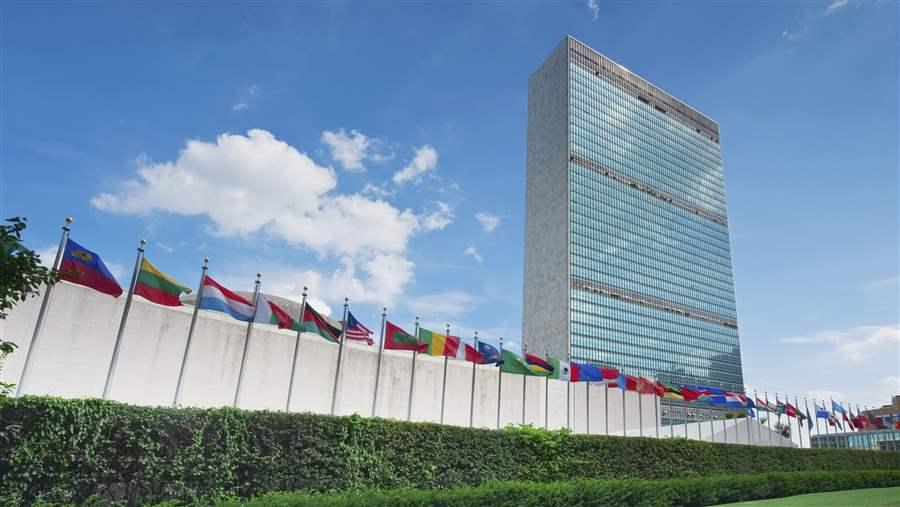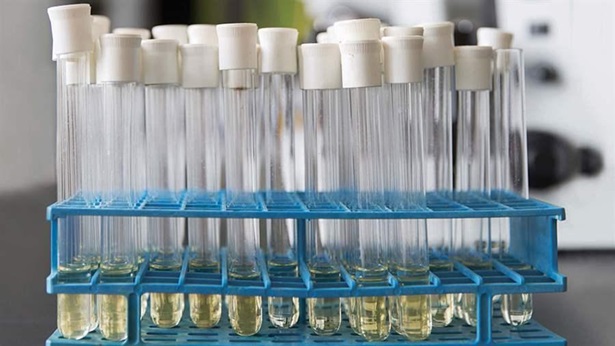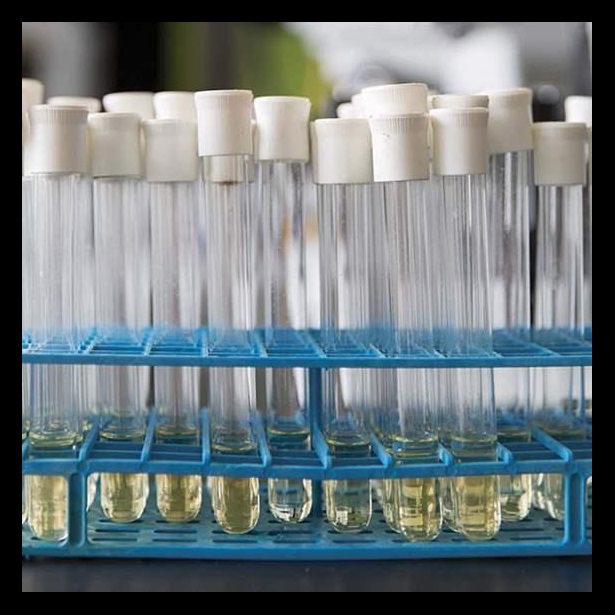World Leaders Commit to Fighting Antimicrobial Resistance
Stakeholders must now build on international momentum, ensure action

The high-level meeting, and a number of related satellite events, brought together a wide range of stakeholders to direct the world’s attention to the drivers of AMR and the actions needed to combat this threat.
© Getty Images
On Sept. 21, 2016, the United Nations General Assembly (UNGA) hosted an unprecedented high-level meeting with world leaders focused on the growing danger that antimicrobial resistance (AMR) poses to individuals worldwide. This was only the fourth time that the General Assembly addressed a global health threat, putting AMR in the company of deadly diseases such as HIV/AIDS and Ebola.
The high-level meeting, and a number of related satellite events, brought together a wide range of stakeholders— among them individual governments, private industry, and nongovernmental organizations (NGOs)—to direct the world’s attention to the drivers of AMR and the actions needed to combat this threat. A number of key themes emerged from these discussions, including:
Spurring innovation of novel therapeutics and diagnostics
The high-level meeting and all of the AMR stakeholder events highlighted the critical need for governments, NGOs, and the private sector to work together to help spur innovation of new diagnostics and therapeutics to help identify and treat resistant infections. There has been a more than 30-year drought in the discovery of new types of antibiotics, which are key to fighting some of the most serious microbial threats. Countries and stakeholder organizations highlighted a wide range of current activities in this space. For example, Joe Larsen, acting deputy director of the Biomedical Advanced Research and Development Authority, presented on the latest effort to spur innovation from the United States—the Combating Antibiotic-Resistant Bacterial Accelerator (CARB-X)—a program aimed at providing funding and support for scientists to develop novel therapies. Larsen announced that CARB-X has so far received 163 expressions of interest for this funding and expects to announce an initial round of investments in early 2017.
Ensuring access to current and future treatments and diagnostics
Representatives from low-income countries, as well as many nongovernmental organizations, emphasized that, while innovation of new therapies is essential to addressing AMR, any work to encourage research and development activities by private industry must also ensure equitable access to novel treatments and diagnostics for patients in developing countries. The tension between innovation and access was clear in many of the discussions. In order to attract pharmaceutical investment in AMR research and development, companies must be able to see an adequate return on their investment. However, the potential for high pricing of new treatments could minimize the impact of innovation in countries where there is a large burden of disease. Stakeholders from both the private and public sectors agreed that it cannot be an either/or situation. Both innovation and access are needed to address AMR, and balancing these two priorities will be an important focus for future discussions.
Improving surveillance systems
Another priority highlighted was the need to enhance current AMR surveillance efforts. Tom Frieden, director of the Centers for Disease Control and Prevention (CDC), speaking at a CDC Foundation event, highlighted drug-resistant tuberculosis and malaria and listed surveillance as one of four key actions that must be taken to address AMR. Surveillance of both antimicrobial use and resistance can help assess the impact of current AMR programs and identify targets for future efforts.
Developing metrics to assess progress
Finally, many stakeholders called for concrete measures to assess progress made on addressing AMR globally. Governments highlighted specific targets within their countries. The United States pointed toward joint efforts from the CDC and The Pew Charitable Trusts to identify how much of antibiotic use in the U.S. is inappropriate and set concrete targets for improvements. Japan highlighted its four-year target (included in its national action plan on AMR) of reducing antimicrobial use by one-third compared with 2013 levels. These and other measures are needed to track progress as well as hold stakeholders accountable for the commitments they have made to combat AMR.
Next steps
As a result of the high-level meeting, all 193 U.N. member countries agreed to a political declaration that commits individual governments to taking key steps to address AMR, including:
- Developing national actions plans, programs, and policy initiatives to address AMR.
- Mobilizing human and financial resources to aid the implementation of actions contained within these national action plans.
- Strengthening surveillance systems to monitor the use of antimicrobials in humans and animals.
- Supporting efforts to raise awareness of AMR among different groups, including health professionals and the general public.
- Supporting a One Health approach to addressing AMR.
Beyond individual governments, private industry from both the human health and food animal production sectors also committed to taking action to address AMR globally. Over 30 CEOs of global companies involved in the manufacturing of animal protein agreed to take steps to ensure responsible antibiotic use in animal agriculture. Also, 13 pharmaceutical companies released a plan highlighting the role their industry can play in helping to fight AMR, including a commitment to take action in four areas by 2020:
- Reducing the environmental impact from production of antibiotics (e.g., through runoff).
- Supporting the appropriate use of antibiotics,
- Improving access to treatments and diagnostics for patients who need them,
- Exploring new ways for industry and the public sector to collaborate to help spur innovation on new antibiotics, vaccines, and diagnostics.
The UNGA declaration and associated industry commitments mark the increasing recognition of a need to combat this public health threat. However, in the coming months and years, it will be critical to track progress toward the commitments made by both governments and other stakeholders to ensure that these actions are fully implemented in a coordinated and sustained fashion.
As part of the General Assembly declaration, the U.N. Secretary-General—in conjunction with the World Health Organization (WHO), the Food and Agriculture Organization, and the World Organization for Animal Health—is tasked with establishing an ad hoc committee to provide guidance on implementation of AMR activities. This committee is scheduled to produce a progress report to the General Assembly at its 73rd session in 2018. Throughout the week, WHO Director-General Margaret Chan emphasized the critical role that stakeholders from all sectors play in driving progress and supporting accountability.
NGOs should also take steps to monitor implementation of AMR activities and shine a light on areas in need of additional action. The political declaration calls for the ad hoc committee to draw on the expertise of external stakeholders to enhance implementation efforts.
The Pew Charitable Trusts is committed to ensuring that the commitments made during the UNGA high-level meeting are translated into action, and, as part of this commitment, joined with a number of organizations to form the Conscience of Antimicrobial Resistance Accountability. In the weeks since the UNGA, other NGOs, governments, and foundations have been assessing how they can best contribute to growing momentum. We look forward to working together with partners in the governmental, nonprofit, and private sectors moving forward to help sustain and build on this international momentum that will continue to be essential in the fight against AMR.
Allan Coukell is The Pew Charitable Trusts’ senior director for health programs. Rachel Zetts works on The Pew Charitable Trusts’ antibiotic resistance project.


America’s Overdose Crisis
Sign up for our five-email course explaining the overdose crisis in America, the state of treatment access, and ways to improve care
Sign up

A Scientific Roadmap for Antibiotics
A sustained and robust pipeline of new antibacterial drugs and therapies is critical to preserve public health










